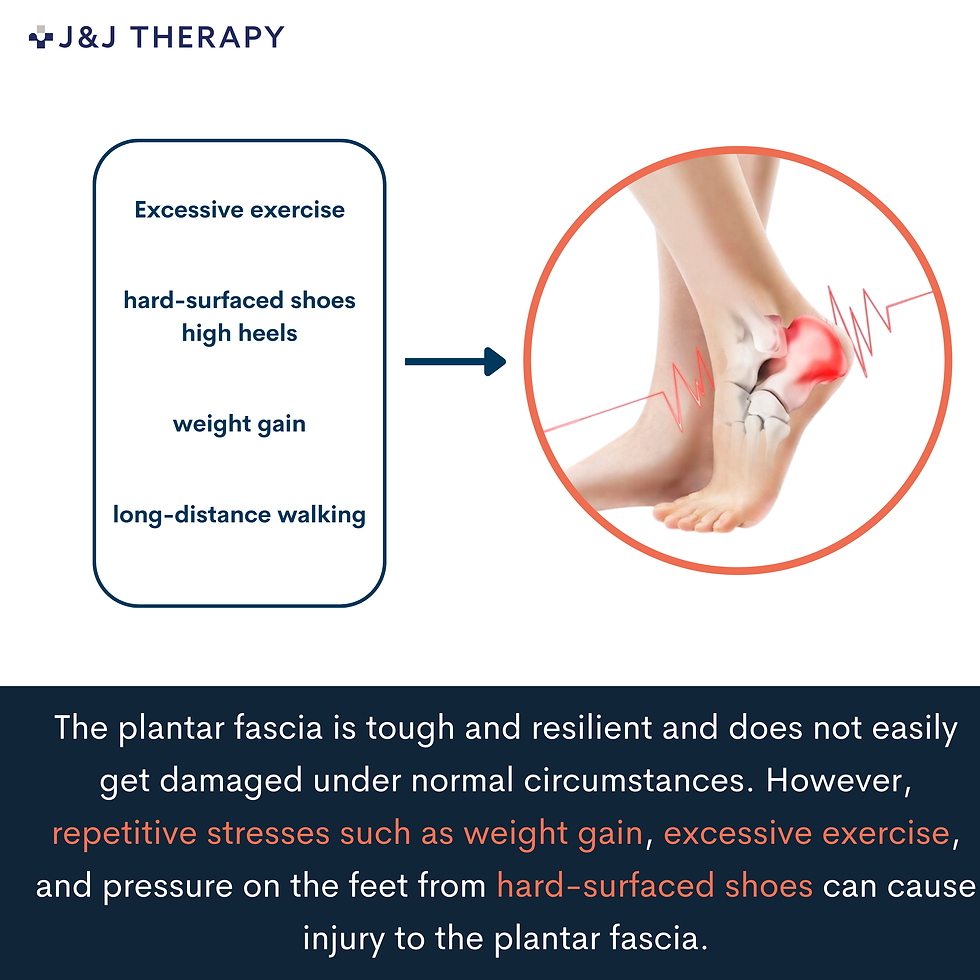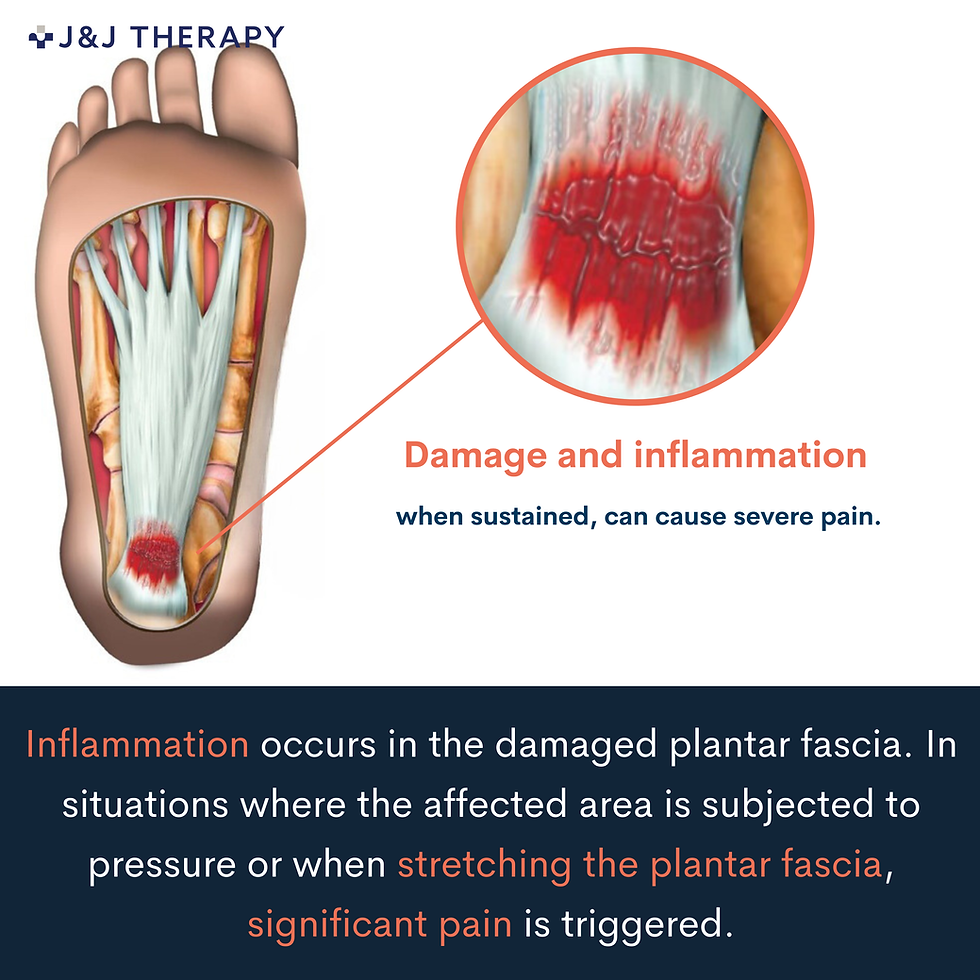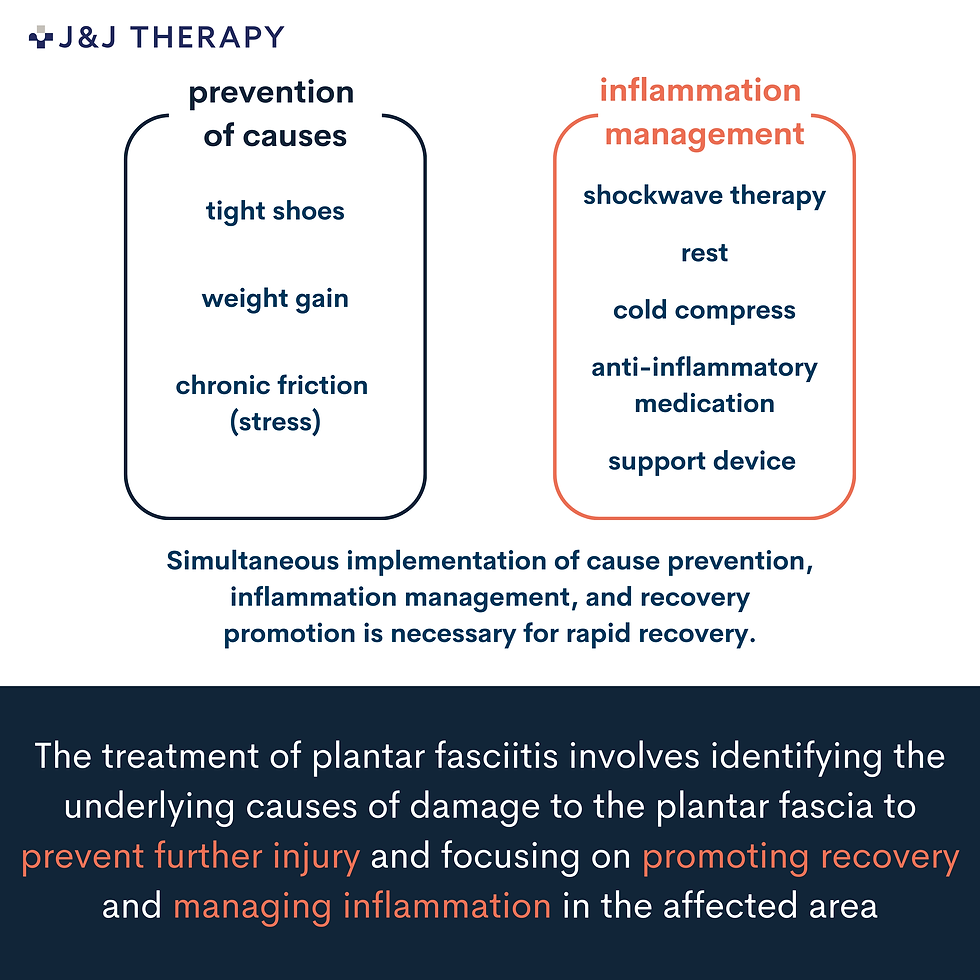Severe pain in the soles of your feet? It’s often plantar fasciitis — here’s how we fix it
- 지수 이
- Aug 14
- 2 min read










Severe pain in the soles of your feet? It’s often plantar fasciitis — here’s how we fix it
At a glance
What you feel | Where it hurts | Typical pattern | First useful step |
Sharp heel/arch pain, worst on the first steps after rest | Inner heel, arch, sometimes forefoot | Loosens as you “warm up”, then returns after long standing/sitting | Reduce painful loads and book an assessment for a fascia‑safe plan |
What is the plantar fascia and why does it hurt?The plantar fascia is a strong band under the foot that supports the arch and helps manage body‑weight loads. With repeated stress (long walks, hard‑soled/high‑heeled shoes, sudden training spikes, weight gain), the tissue can become overloaded and irritated, causing heel and sole pain.
Quick self‑check
Checklist | Yes/No |
Pain in the sole/heel, especially with the first steps or after sitting | |
Tenderness when you press the inner heel or arch | |
Worse after long walks/standing, or in hard‑soled shoes |
Seek urgent care if you have fever with night pain, marked swelling/redness, numbness/tingling into the toes, or a sudden traumatic injury.
Why recovery can drag onThe plantar fascia has limited blood supply. Daily steps keep stressing the area, so an acute irritation can turn into chronic heel pain without a structured plan.
Our treatment plan (clear phases)
Phase & goal | What we use at J&J Therapy | What it does |
Calm inflammation | Shockwave therapy, Ultrasound therapy | Reduces stubborn pain, improves local blood flow and healing |
Ease pain | Electrical therapy (TENS/EMS), protective taping | Short‑term analgesia so you can walk and sleep |
Release overload | Therapeutic massage to calf/plantar tissues; foot & ankle mobilisation | Lowers tissue tension and pressure on the fascia |
Reload & prevent recurrence | Corrective exercise education (calf/plantar strength, ankle mobility, foot‑intrinsic work) + gait & footwear coaching | Restores capacity, supports the arch, reduces re‑injury risk |
If swelling present | Lymphatic massage | Assists fluid movement and comfort |
What a session looks like
Step | What happens | Your takeaway |
1. Consult & assess | Confirm plantar fasciitis vs other causes (nerve, stress reaction, etc.) | Clear diagnosis & goals |
2. Hands‑on & device care | Corrective/therapeutic massage + shockwave when indicated | Pain down, walking easier |
3. Your mini programme | 3–5‑minute home routine, footwear & daily‑step rules | Confidence and control between visits |
Home tips you can start today
Morning routine: before standing, 10–15 ankle pumps and gentle calf stretches.
Roll & hold: roll the sole on a tennis/lacrosse ball for 1–2 minutes (comfortably).
Isometrics: seated calf raises, 5×10‑second holds, pain‑free range.
Footwear: choose cushioned, supportive trainers; avoid thin, hard soles during a flare.
Load management: temporarily reduce hills and long walks; add steps back gradually.
Which of our services fit best (by goal)
Goal | Best‑fit services at J&J |
Calm stubborn pain & inflammation | Shockwave, Ultrasound, TENS/EMS |
Release tight tissues & improve mobility | Therapeutic massage, Joint mobilisation |
Reduce swelling & discomfort | Lymphatic massage |
Long‑term fix & recurrence prevention | Corrective exercise education (strength/mobility/foot‑intrinsic work) |
Ready to get back on your feet?Most clients feel meaningful relief within 3–6 sessions and leave with a simple, personalised plan. Book your assessment at J&J Therapy and walk, work and train with confidence.



Comments